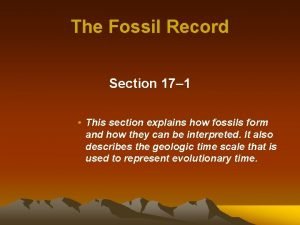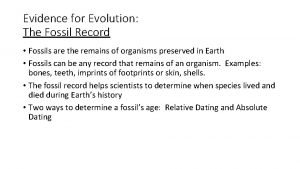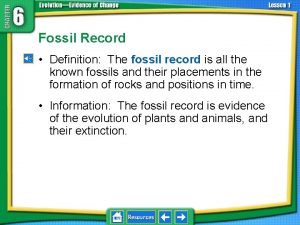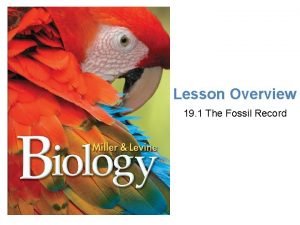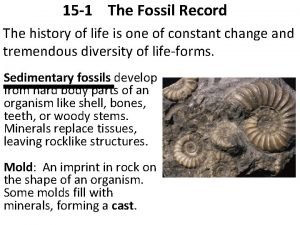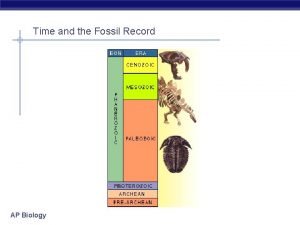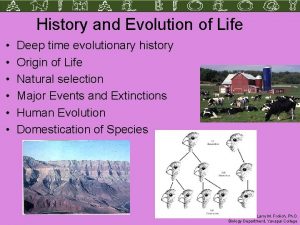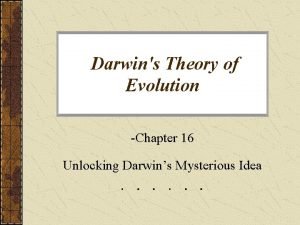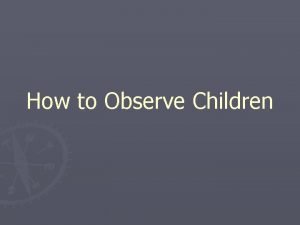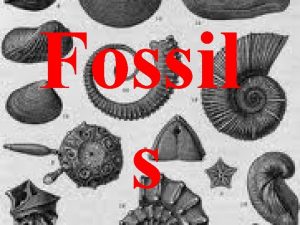15 1 The Fossil Record The history of








- Slides: 8

15 -1 The Fossil Record The history of life is one of constant change and tremendous diversity of life-forms. Sedimentary fossils develop from hard body parts of an organism like shell, bones, teeth, or woody stems. Minerals replace tissues, leaving rocklike structures. Mold: An imprint in rock on the shape of an organism. Some molds fill with minerals, forming a cast.

Robert Hooke (1635 – 1703) First to study fossils with a microscope. Saw fossils as something more than naturally occurring parts of rocks. They were the remains of plants and animals! • • • Distribution of Fossils: Nicholas Steno (1638 – 1686) Proposed the law of superposition – Successive layers of rock or soil were deposited on top of one another by wind or water. The lowest stratum is the oldest. Relative age of fossil – Use law of superposition Absolute age of fossil – Use radiological evidence.

See pg. 280 in text

Relative Age of Fossils

Absolute Age

Succession of Forms Fossil-bearing strata show that extinctions occurred. Mass extinctions probably resulted from drastic environmental changes.

Biogeography • The study of the geographical distribution of fossils and of living organisms. • New organisms arise in areas where similar organisms lived. armadillo bill nye fossils

Section 15 -1 Review 1. Define the term fossil, and name three different kinds of fossils. 2. What was Robert Hooke’s contribution to the understanding of fossils? 3. How does the law of superposition allow paleontologists to assign relative ages to fossils? 4. In what geological era did the first organisms arise? 5. How do biogeographic observations suggest that a modification process caused new species to arise?
